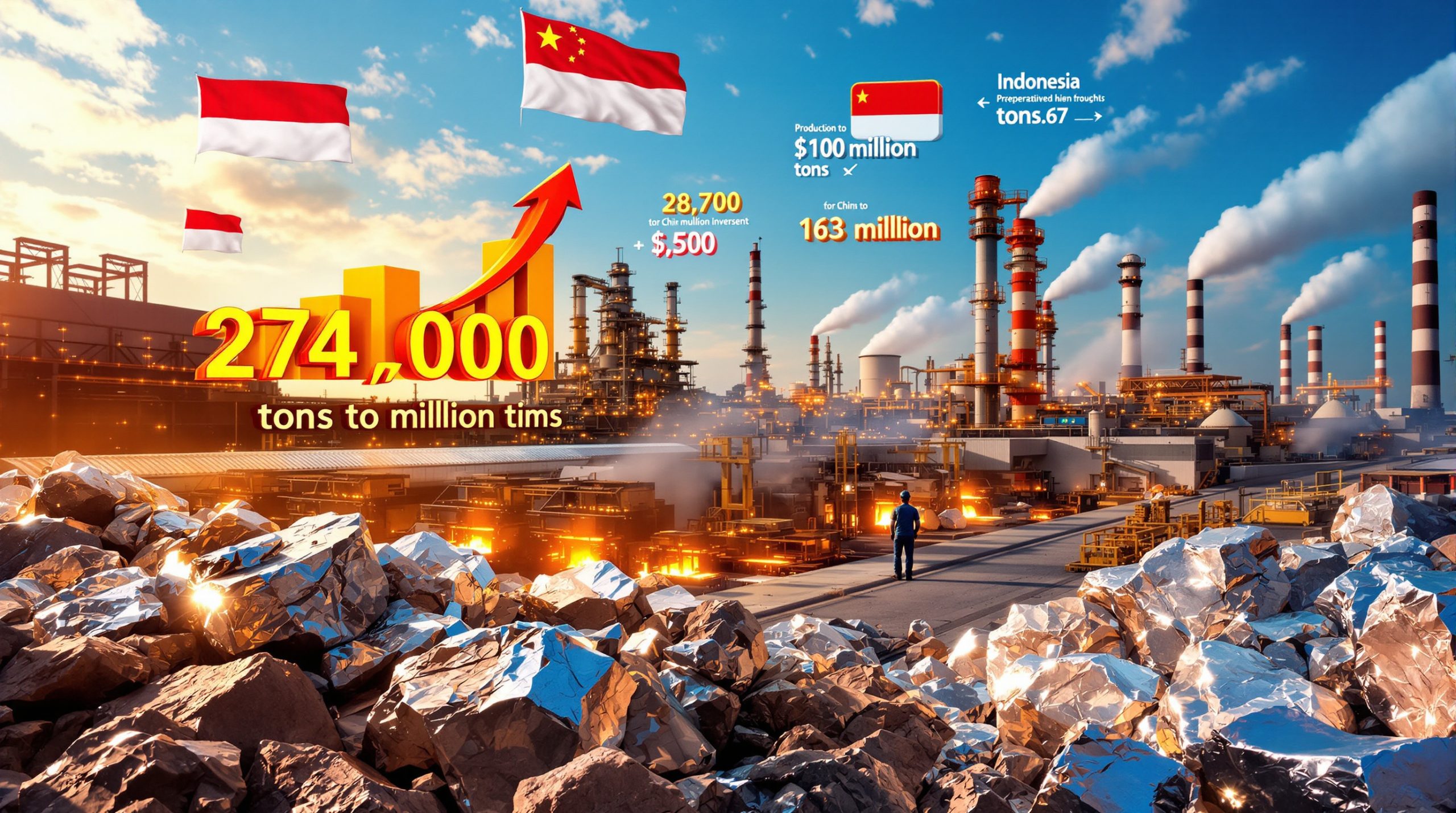What Makes a Rare Earth Agreement Between Nations Strategically Vital?
Modern technological infrastructure relies heavily on rare earth elements, creating significant vulnerabilities when supply chains become concentrated in single regions. The US and Japan rare earths agreement represents a strategic response to these dependencies, addressing how these materials serve as essential components in defense systems, electric vehicle manufacturing, and consumer electronics. Furthermore, this makes their availability a matter of national security rather than merely economic concern.
The strategic importance of rare earth elements extends beyond their immediate applications. They enable the production of permanent magnets used in wind turbines, hybrid vehicle motors, and advanced military equipment. Without reliable access to these materials, nations face potential disruptions to their technological capabilities and economic competitiveness.
Understanding Critical Mineral Dependencies in Modern Economies
China's overwhelming control of rare earth processing creates a bottleneck that affects global supply chains. While extraction capabilities are more geographically distributed, with the United States controlling approximately 12% and Myanmar holding 8% of global extraction capacity, the concentration of processing facilities presents the greater strategic challenge.
This processing dominance means that even nations with significant domestic rare earth deposits often depend on Chinese facilities to transform raw materials into usable forms. Malaysia and Vietnam contribute 4% and 1% respectively to global processing operations, but their combined capacity remains insufficient to provide meaningful alternatives to Chinese facilities.
The implications of this concentration became evident as Beijing expanded export control measures, demonstrating how processing dominance translates into geopolitical leverage. Nations dependent on these materials found themselves vulnerable to supply disruptions that could affect everything from smartphone production to defense manufacturing. However, the critical minerals energy transition demonstrates how these challenges are driving innovation in supply chain resilience.
Supply Chain Vulnerabilities Exposed by Recent Export Restrictions
Recent Chinese export control expansions have highlighted the fragility of global rare earth supply chains. These restrictions affect not only immediate availability but also create uncertainty for long-term industrial planning and investment decisions.
The vulnerability extends beyond rare earth elements themselves. Manufacturing sectors that depend on these materials face cascading effects when supply chains experience disruptions. Electric vehicle manufacturers, renewable energy companies, and defense contractors all require stable access to ensure production continuity.
Supply chain resilience becomes particularly critical during periods of geopolitical tension, when export controls may be used as policy tools. The concentration of processing capabilities means that alternative sources cannot quickly compensate for disrupted supplies, creating extended periods of uncertainty for dependent industries. Consequently, the US-China trade war insights reveal how these tensions are reshaping global supply strategies.
How Does the US-Japan Critical Minerals Framework Address Supply Security?
Joint Investment Coordination and Streamlined Permitting Processes
The US and Japan rare earths agreement establishes coordinated investment mechanisms designed to develop alternative processing capabilities outside China's sphere of influence. This collaboration involves approximately 20 companies participating in a $550 billion investment package, representing unprecedented scale in critical minerals cooperation.
Both nations commit to using economic policy tools and coordinated investment to accelerate the development of diversified markets for critical minerals and rare earths. This approach combines public sector coordination with private sector participation to create commercially viable alternatives to existing supply chains.
The framework includes provisions for providing financial support to selected projects within six months of the agreement's signing. This rapid timeline indicates the urgency both nations place on establishing alternative supply sources and reducing dependence on concentrated processing facilities.
Rapid Response Mechanisms for Supply Chain Disruptions
The agreement establishes mechanisms for coordinated responses to supply chain disruptions, though specific protocols remain under development. These systems aim to provide emergency coordination capabilities when traditional supply sources experience interruptions.
Rapid response capabilities become essential during geopolitical crises or natural disasters that affect major processing facilities. The framework anticipates such scenarios by creating communication channels and coordination protocols between US and Japanese agencies responsible for critical mineral security.
Implementation of these mechanisms requires integration between government agencies, private sector participants, and allied nation partners. The effectiveness of rapid response systems depends on pre-established relationships and clear decision-making authorities during crisis situations.
Strategic Stockpiling Arrangements Between Allied Nations
Both countries agreed to consider mutually complementary stockpiling arrangements as part of their supply chain security strategy. These stockpiles serve as buffers against supply disruptions while alternative sources scale up production capabilities.
Strategic stockpiling involves complex decisions about which materials to store, optimal quantities, and rotation schedules to maintain material quality. The complementary nature of US-Japan stockpiling arrangements suggests coordination to avoid duplication while ensuring comprehensive coverage of critical materials.
The framework emphasises cooperation with international partners to enhance supply chain security. This multilateral approach recognises that no two nations alone can effectively counter the scale of existing market concentration in rare earth processing. In addition, European initiatives like the CRM facility in Europe demonstrate similar strategic thinking across allied nations.
| Framework Element | Implementation Timeline | Strategic Purpose |
|---|---|---|
| Joint Project Funding | Within 6 months | Diversify processing capabilities |
| Rapid Response Group | Immediate activation | Emergency supply coordination |
| Stockpiling Arrangements | Ongoing development | Buffer against supply shocks |
| Trade Policy Alignment | Continuous coordination | Counter unfair market practices |
Which Critical Minerals Are Most Vulnerable to Supply Disruptions?
Rare Earth Elements Essential for Defense Technologies
Defense applications represent some of the most critical uses for rare earth elements, with fighter jets and advanced military systems requiring specialised materials unavailable from alternative sources. These applications cannot easily substitute alternative materials without significant performance degradation or system redesign.
Military equipment often requires rare earth elements with specific purity levels and characteristics that civilian applications may not demand. This specialisation creates additional vulnerabilities, as military-grade materials may have even more concentrated supply sources than commercial equivalents.
The defense industry's procurement cycles and qualification processes mean that supply disruptions can have extended impacts. Military contractors require years to qualify new suppliers and materials, making rapid substitution during supply crises extremely difficult.
Battery Materials Driving Electric Vehicle Manufacturing
Electric vehicle production depends heavily on rare earth elements for motor magnets and battery systems. As automotive manufacturers transition toward electrification, demand for these materials continues growing rapidly, increasing supply chain pressure.
The automotive industry's scale means that even small supply disruptions can have significant economic impacts. Major automotive manufacturers require consistent material supplies to maintain production schedules and meet delivery commitments to consumers.
Battery technology development also creates evolving demands for different rare earth elements. As manufacturers optimise battery chemistry and performance, the specific materials required may shift, creating new vulnerabilities in supply chains.
Permanent Magnet Components for Renewable Energy Systems
Wind turbines and other renewable energy systems rely on permanent magnets containing rare earth elements for efficient energy conversion. The global transition toward renewable energy increases demand for these materials while supply sources remain concentrated.
Renewable energy deployment goals in many countries assume continued access to rare earth materials for wind turbine production. Supply disruptions could significantly impact renewable energy expansion plans and climate change mitigation strategies.
The long operational life of wind turbines means that supply disruptions affect not only new installations but also maintenance and replacement part availability for existing systems.
"While China controls rare earth processing, the United States and Myanmar hold 12% and 8% of global extraction capacity respectively, with Malaysia and Vietnam contributing to processing operations."
What Economic Incentives Drive International Critical Mineral Partnerships?
$550 Billion Investment Package Implications
The scale of the $550 billion investment package reflects the enormous capital requirements for establishing alternative rare earth processing capabilities. This investment level indicates both the strategic importance of supply chain diversification and the significant costs involved in competing with established facilities.
Investment requirements extend beyond processing facilities to include mining operations, transportation infrastructure, and workforce development. Creating competitive alternatives to existing supply chains requires comprehensive industrial ecosystem development rather than isolated facility construction.
The participation of approximately 20 companies suggests broad industry recognition of supply chain vulnerabilities and willingness to invest in alternative sources despite potentially higher costs compared to existing suppliers.
Tariff Reduction Strategies to Boost Bilateral Trade
Trade policy coordination between the US and Japan aims to create economic incentives for rare earth supply chain diversification. These policies can offset higher production costs in alternative facilities by reducing trade barriers and creating preferential access to markets.
Tariff structures significantly impact the competitiveness of alternative supply sources. Strategic tariff policies can make higher-cost production economically viable while domestic industries adjust to new supply chain arrangements.
The timing of the framework agreement, preceding scheduled negotiations between the US and China on tariffs and export controls, suggests strategic positioning to influence broader trade discussions. According to the White House briefings, this coordination reflects long-term strategic planning.
Currency Market Responses to Strategic Agreements
Strategic partnerships in critical materials can influence currency markets as investors evaluate the long-term implications for trade flows and industrial competitiveness. Large investment packages create expectations about future economic relationships between partner nations.
Currency stability becomes important for long-term industrial investments, particularly when projects involve multi-year development timelines and complex international supply chains. Partnership agreements can provide confidence about stable economic relationships.
How Do Geopolitical Tensions Shape Resource Security Strategies?
Export Control Escalations and Market Responses
China's recent expansion of export controls demonstrates how geopolitical tensions translate into economic policy tools affecting global supply chains. These measures create immediate market uncertainty while prompting strategic responses from affected nations.
Export control escalations often trigger retaliatory measures and accelerate efforts to develop alternative supply sources. The cycle of restrictions and responses can fundamentally reshape global supply chain structures over time.
Market responses to export control announcements indicate the economic significance of supply chain concentration. Price volatility and supply uncertainty create incentives for diversification investments despite higher costs. Furthermore, Reuters reports indicate these agreements represent direct responses to such market pressures.
Building Multilateral Alternatives to Single-Source Dependencies
The US and Japan rare earths agreement emphasises cooperation with international partners to create multilateral alternatives to concentrated supply sources. This approach recognises that bilateral cooperation alone cannot match the scale of existing market dominance.
Multilateral alternatives require coordination across different regulatory systems, technical standards, and commercial practices. Success depends on harmonising approaches while maintaining competitive market dynamics.
Building alternative supply networks involves not only production facilities but also research and development capabilities, technical expertise, and market access arrangements across multiple countries.
Technology Transfer Restrictions and Industrial Policy
Technology transfer restrictions affect the development of alternative rare earth processing capabilities by limiting access to established production techniques and equipment. Nations developing new facilities must often develop proprietary technologies or alternative approaches.
Industrial policy coordination between allied nations can accelerate technology development by sharing research costs and technical expertise. Joint development programmes can overcome individual nations' resource limitations.
The intersection of technology restrictions and industrial policy creates complex strategic environments where nations must balance cooperation with competition in developing critical capabilities.
What Role Do "Like-Minded Partners" Play in Supply Chain Diversification?
European Union Integration in Critical Mineral Strategies
The framework includes provisions for cooperation with international partners, suggesting integration with European Union critical mineral initiatives. This multilateral approach aims to create sufficient scale to compete with established supply chains.
European rare earth initiatives focus on both domestic processing capabilities and strategic partnerships with resource-rich nations. Integration with US-Japan efforts could create complementary capabilities across different regions and market segments.
Regulatory harmonisation between different systems presents challenges for multilateral cooperation, but successful integration could create more resilient supply networks spanning multiple continents.
Australia's Position as Alternative Processing Hub
Australia's significant rare earth deposits and advanced mining expertise position it as a potential processing hub for alternative supply chains. Australian green metals leadership demonstrates the country's strategic positioning in this sector.
Geographic proximity to Asian markets provides Australia with logistical advantages for serving demand in major consuming regions. Investment in Australian processing capabilities could reduce transportation costs and delivery times compared to North American alternatives.
Australian regulatory stability and alignment with allied nations creates favourable conditions for long-term industrial investments, though infrastructure development requires substantial capital commitment.
Democratic Alliance Building in Resource Security
Resource security cooperation among democratic nations reflects broader strategic competition beyond immediate commercial considerations. These partnerships aim to ensure that critical material access does not become a tool for political coercion.
Democratic alliance building in resource security requires balancing commercial competitiveness with strategic cooperation. Nations must maintain viable industries while supporting collective security objectives.
The success of democratic resource security initiatives depends on creating economically sustainable alternatives that can compete over the long term without continuous subsidisation.
| Region/Country | Processing Share | Strategic Advantages | Current Limitations |
|---|---|---|---|
| China | 90%+ | Established infrastructure, cost efficiency | Export control risks |
| United States | 2-3% | Advanced technology, regulatory stability | Limited processing capacity |
| Australia | 1-2% | Rich deposits, allied nation status | Infrastructure development needed |
| Japan | <1% | Advanced manufacturing, technology expertise | Limited domestic resources |
How Might This Agreement Transform Global Supply Chain Dynamics?
Timeline for Alternative Processing Facility Development
The framework's six-month timeline for providing financial support to selected projects indicates urgency in developing alternative processing capabilities. However, actual facility construction and commissioning require significantly longer periods, typically several years for complex rare earth processing operations.
Development timelines depend on multiple factors including environmental permitting, technology selection, workforce training, and market development. Even with accelerated support, meaningful production capacity may not emerge for 3-5 years after initial project approval.
The gap between immediate financial support and operational production creates ongoing vulnerability periods during which existing supply chain concentrations remain problematic for dependent industries.
Investment Requirements for Competitive Production Costs
Creating cost-competitive alternatives to established rare earth processing facilities requires substantial capital investment and operational optimisation. New facilities must overcome the cost advantages that existing producers achieve through scale, experience, and integrated supply chains.
Investment requirements extend beyond facility construction to include technology development, workforce training, and market development activities. Total system costs for establishing competitive alternatives often exceed initial facility investment estimates.
Long-term competitiveness depends on achieving sufficient production scale and operational efficiency to match or approach existing cost structures. This may require coordinated investment across multiple facilities and market segments.
Market Share Redistribution Projections
Successful implementation of the framework could redistribute global rare earth processing market share over time, though China's dominance will likely persist in the near term. Alternative capacity development typically requires years to achieve meaningful production levels.
Market share redistribution depends on the commercial success of alternative facilities and their ability to secure long-term customer commitments. Industrial customers may require extensive qualification processes before accepting new suppliers for critical applications.
The pace of market share change will likely vary across different rare earth elements and application areas, with some segments proving more amenable to supply source diversification than others. However, the mining industry evolution suggests accelerating change across the sector.
What Are the Long-Term Implications for Technology Manufacturing?
Electric Vehicle Production Security
Diversified rare earth supply chains could provide greater production security for electric vehicle manufacturers, reducing risks from supply disruptions that could halt assembly lines. This security becomes increasingly important as automotive companies transition toward electrification.
Supply chain security enables automotive manufacturers to make long-term production commitments and investment decisions with greater confidence. Stable material access supports the massive capital investments required for electric vehicle factory construction and tooling.
The automotive industry's global scale means that supply chain improvements in rare earth availability could accelerate electric vehicle adoption by reducing production risks and potentially stabilising material costs.
Defense Industry Supply Chain Resilience
Enhanced supply chain resilience for rare earth elements directly supports defense industry production capabilities and national security objectives. Military equipment production cannot easily substitute alternative materials without significant performance compromises.
Defense contractors require assured access to military-grade rare earth materials with specific purity and performance characteristics. Alternative supply sources must meet stringent military specifications and qualify through extensive testing processes.
Supply chain resilience for defense applications often requires domestic or allied-nation production capabilities to ensure availability during potential conflicts or trade disputes.
Renewable Energy Infrastructure Dependencies
Reliable rare earth supplies support renewable energy deployment goals by ensuring availability of materials needed for wind turbines and other clean energy technologies. Supply chain security becomes critical as nations accelerate renewable energy transitions.
Large-scale renewable energy projects require long-term material supply assurances to secure financing and complete development. Alternative supply sources can provide the supply security needed for major infrastructure investments.
The intersection of renewable energy goals and rare earth supply security creates strategic imperatives for nations pursuing both energy independence and climate change mitigation objectives.
How Do Recent Nuclear Power Cooperation Elements Strengthen the Partnership?
Next-Generation Reactor Technology Collaboration
The framework includes cooperation on AP1000 nuclear reactors and small modular reactors, expanding the partnership beyond critical minerals to broader energy security cooperation. This collaboration could involve Japanese companies including Mitsubishi Heavy Industries and Toshiba Group.
Nuclear power cooperation addresses Japan's energy security concerns while supporting American nuclear technology exports. Japan shut down all reactors following the 2011 Fukushima disaster but recognises nuclear power as important for energy security and affordable power supply.
Next-generation reactor collaboration leverages Japanese manufacturing expertise and American reactor technology development, potentially creating competitive advantages in global nuclear markets currently dominated by China, France, South Korea, and Russia.
Small Modular Reactor Development Initiatives
Small modular reactor development represents a strategic opportunity for US-Japan cooperation in advanced nuclear technologies. These systems could provide flexible power generation solutions for various applications including industrial facilities and remote locations.
Japanese manufacturing capabilities combined with American reactor designs could accelerate small modular reactor commercialisation and deployment. This collaboration could position both nations competitively in emerging nuclear technology markets.
Small modular reactors may also support critical mineral processing facilities by providing reliable, carbon-free power for energy-intensive rare earth processing operations.
Energy Security Through Diversified Power Sources
Nuclear power cooperation complements rare earth supply chain diversification by addressing broader energy security objectives. Reliable power sources support industrial operations including critical mineral processing facilities.
Japan's energy import dependence creates vulnerabilities that nuclear power cooperation can help address. Domestic nuclear capability reduces reliance on energy imports while supporting industrial competitiveness.
The partnership addresses multiple energy security dimensions simultaneously, creating synergies between critical mineral supply chain development and power generation capabilities.
What Challenges Could Limit the Agreement's Effectiveness?
Infrastructure Development Timelines and Capital Requirements
Developing alternative rare earth processing capabilities requires massive infrastructure investments and extended development timelines that may not align with immediate supply chain security needs. Complex processing facilities can take years to design, permit, construct, and commission.
Capital requirements for competitive facilities often exceed initial estimates due to technology complexity, environmental compliance costs, and market development expenses. The $550 billion investment package, while substantial, may prove insufficient for creating truly competitive alternatives across all rare earth elements.
Infrastructure development faces regulatory hurdles, environmental reviews, and community acceptance processes that can significantly extend project timelines. These delays perpetuate supply chain vulnerabilities during extended development periods.
Competing with Established Low-Cost Production
New rare earth processing facilities must compete with established Chinese operations that benefit from scale economies, integrated supply chains, and years of operational optimisation. This cost disadvantage may require ongoing subsidisation to maintain competitiveness.
Cost competitiveness becomes particularly challenging for commodity-grade rare earth elements where price competition is intense. Higher-value specialised materials may offer better opportunities for alternative suppliers to compete successfully.
Market dynamics may change as China responds to alternative supply development through pricing strategies or capacity expansion designed to undermine new competitor viability.
Regulatory Harmonisation Between Different Legal Systems
Effective cooperation requires harmonising regulatory approaches between US and Japanese systems while maintaining appropriate safety and environmental standards. Different regulatory frameworks can create barriers to integrated supply chain development.
Technical standards, quality requirements, and certification processes must align sufficiently to enable efficient cross-border supply chain operations. Regulatory differences can create additional costs and complexity for multinational operations.
Intellectual property protections, technology transfer rules, and commercial regulations must coordinate to support joint development efforts while protecting national interests and commercial confidentiality.
How Does This Agreement Position Both Nations for Future Resource Competition?
Strategic Autonomy in Critical Technology Supply Chains
The partnership enhances both nations' strategic autonomy by reducing dependence on concentrated supply sources for critical technology materials. This autonomy provides greater policy flexibility during geopolitical tensions or trade disputes.
Strategic autonomy enables nations to pursue technology development and industrial policies without concern about supply chain retaliation or coercion. Independent access to critical materials supports innovation and economic competitiveness.
Reduced supply chain dependence also strengthens negotiating positions in international trade discussions and diplomatic relationships by eliminating potential leverage points for other nations.
Negotiating Leverage in International Trade Discussions
Alternative supply chain capabilities provide leverage in trade negotiations by reducing vulnerability to export controls or supply restrictions. This leverage becomes particularly important in strategic competition contexts.
The timing of the framework agreement before US-China trade discussions demonstrates strategic positioning to influence broader negotiations on tariffs and export controls. Alternative supply options strengthen negotiating positions.
Multilateral partnerships create additional leverage by coordinating approaches among allied nations, potentially influencing global market dynamics and trade relationships.
Innovation Incentives for Alternative Material Development
Supply chain diversification efforts create incentives for developing alternative materials and technologies that reduce dependence on rare earth elements. These innovations could fundamentally change material requirements for various applications.
Research and development cooperation between US and Japanese companies and institutions could accelerate alternative material development by combining resources and expertise. Joint innovation efforts may achieve breakthroughs faster than individual national programmes.
Commercial incentives for material substitution increase as alternative supply sources remain more expensive than established suppliers. Market forces may drive innovation toward reduced rare earth dependence over time.
"The US-Japan rare earths agreement establishes joint investment coordination, rapid response mechanisms for supply disruptions, and strategic stockpiling arrangements to reduce dependence on China's 90%+ market dominance in rare earth processing. The framework includes $550 billion in investments and aims to develop alternative supply chains within six months."
Reshaping Global Critical Mineral Markets
Measuring Success Indicators for Supply Chain Diversification
Success in rare earth supply chain diversification will be measured through multiple indicators including production capacity additions, market share redistribution, price stability, and supply reliability during crisis periods. These metrics must demonstrate meaningful reduction in supply chain concentration.
Commercial viability represents a critical success measure, as subsidised operations cannot provide long-term supply security if they cannot compete economically. Sustainable alternatives must achieve cost competitiveness within reasonable timeframes.
Supply chain resilience testing during actual disruption events will ultimately determine whether diversification efforts provide meaningful security improvements. Theoretical capacity matters less than demonstrated ability to maintain supplies during crisis periods.
Potential Ripple Effects Across Other Strategic Partnerships
The US and Japan rare earths agreement may catalyse similar partnerships between other allied nations facing comparable supply chain vulnerabilities. European Union initiatives, QUAD cooperation, and bilateral agreements with resource-rich nations could follow similar models.
Success in rare earth supply chain diversification could encourage similar approaches for other critical materials including lithium, cobalt, and nickel used in battery production. The framework provides a template for addressing concentrated supply chains in strategic materials.
Regional supply chain integration among allied nations could become a broader trend as countries prioritise supply security alongside economic efficiency in critical material sourcing decisions.
Long-Term Market Structure Evolution Predictions
Global rare earth markets may evolve toward greater regional concentration with allied-nation supply chains serving democratic countries while Chinese capabilities continue serving other markets. This bifurcation could create parallel supply systems with limited integration.
Technology development and material substitution research may reduce overall rare earth demand growth over time, though current applications suggest continued dependence for critical technologies. Market structure evolution will depend on both supply diversification and demand-side innovations.
The ultimate market structure outcome will depend on the commercial success of alternative supply chains and their ability to provide cost-competitive alternatives to established suppliers across the full range of rare earth elements and applications.
Disclaimer: This analysis is based on publicly available information and industry assessments. Geopolitical developments, market conditions, and policy changes may significantly affect actual outcomes. Investment and strategic decisions should consider multiple factors beyond those discussed in this article.
Ready to Capitalise on Critical Mineral Market Opportunities?
The US-Japan rare earths agreement highlights how supply chain shifts create significant trading opportunities in the resources sector, particularly for ASX-listed companies developing alternative processing capabilities. Discovery Alert's proprietary Discovery IQ model delivers real-time notifications on critical mineral discoveries and resource developments, enabling investors to identify actionable opportunities as markets respond to these strategic partnerships and supply chain diversification efforts.




